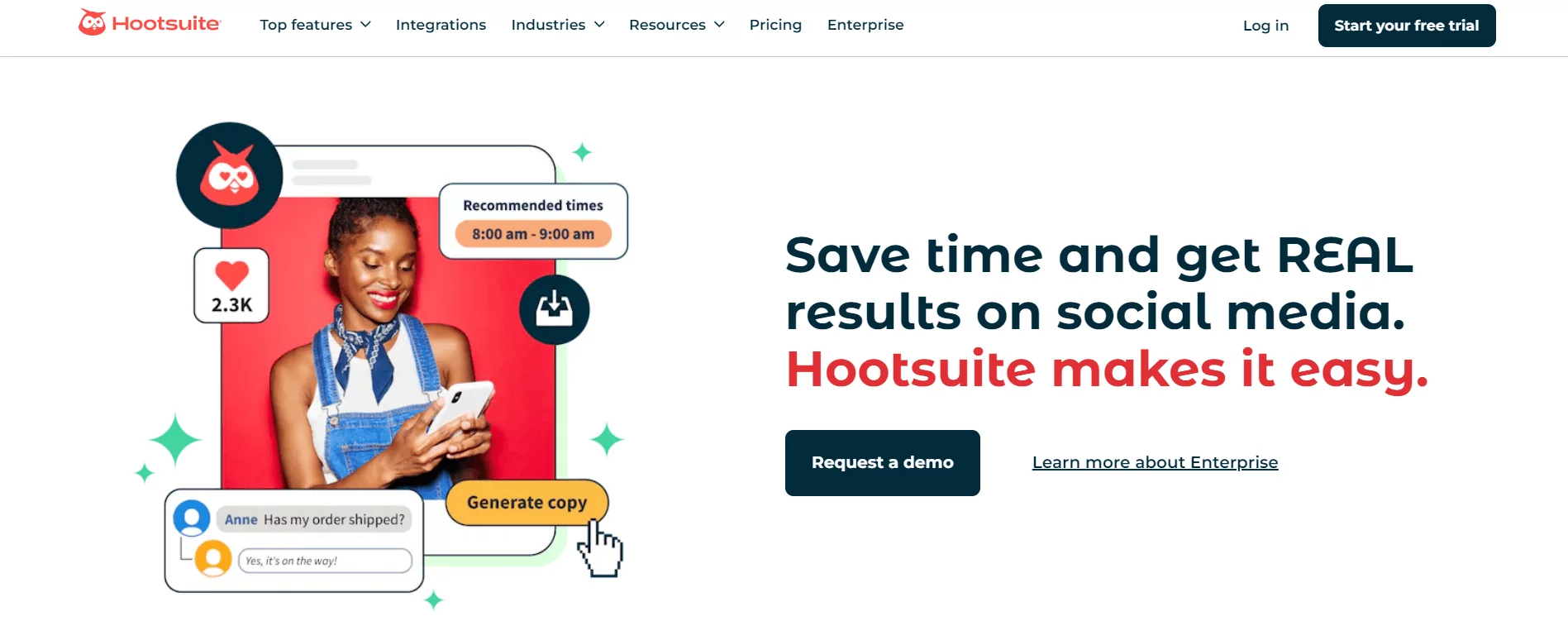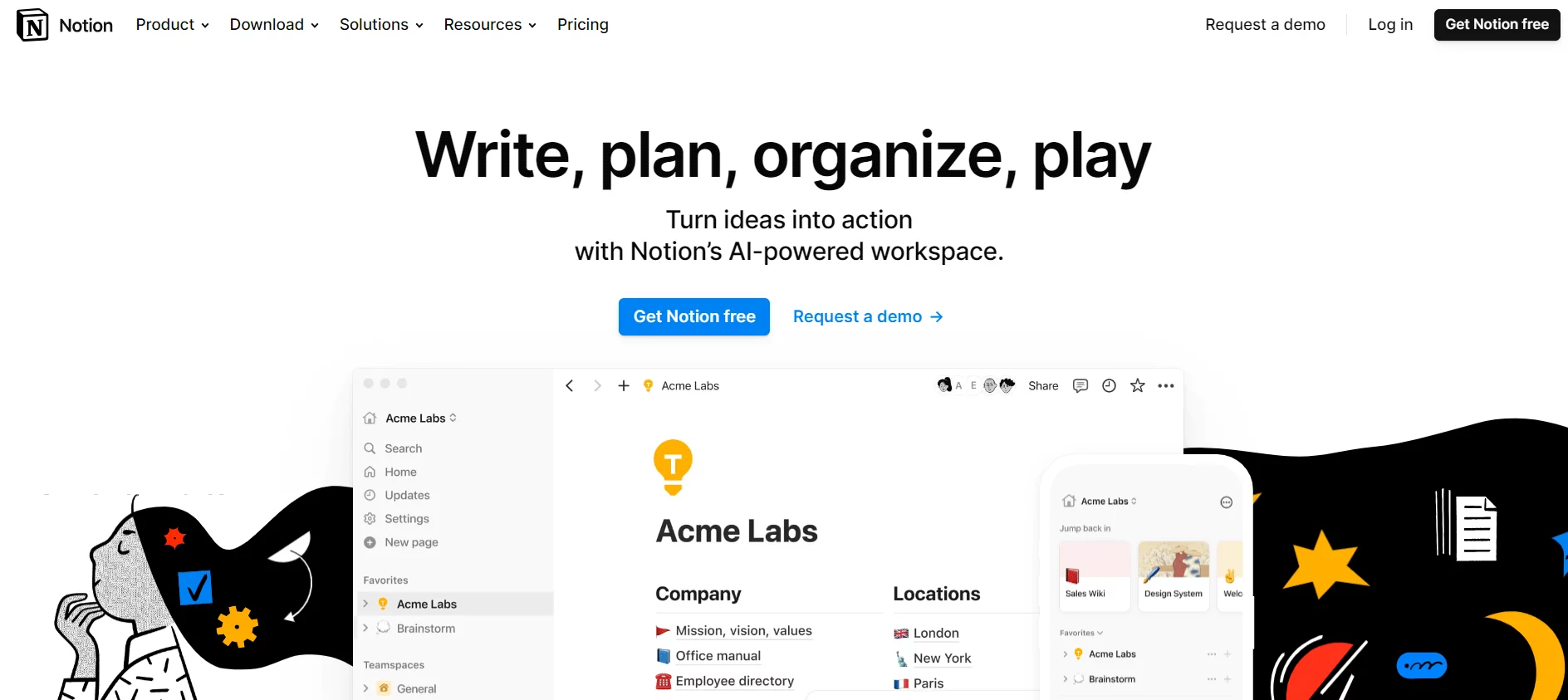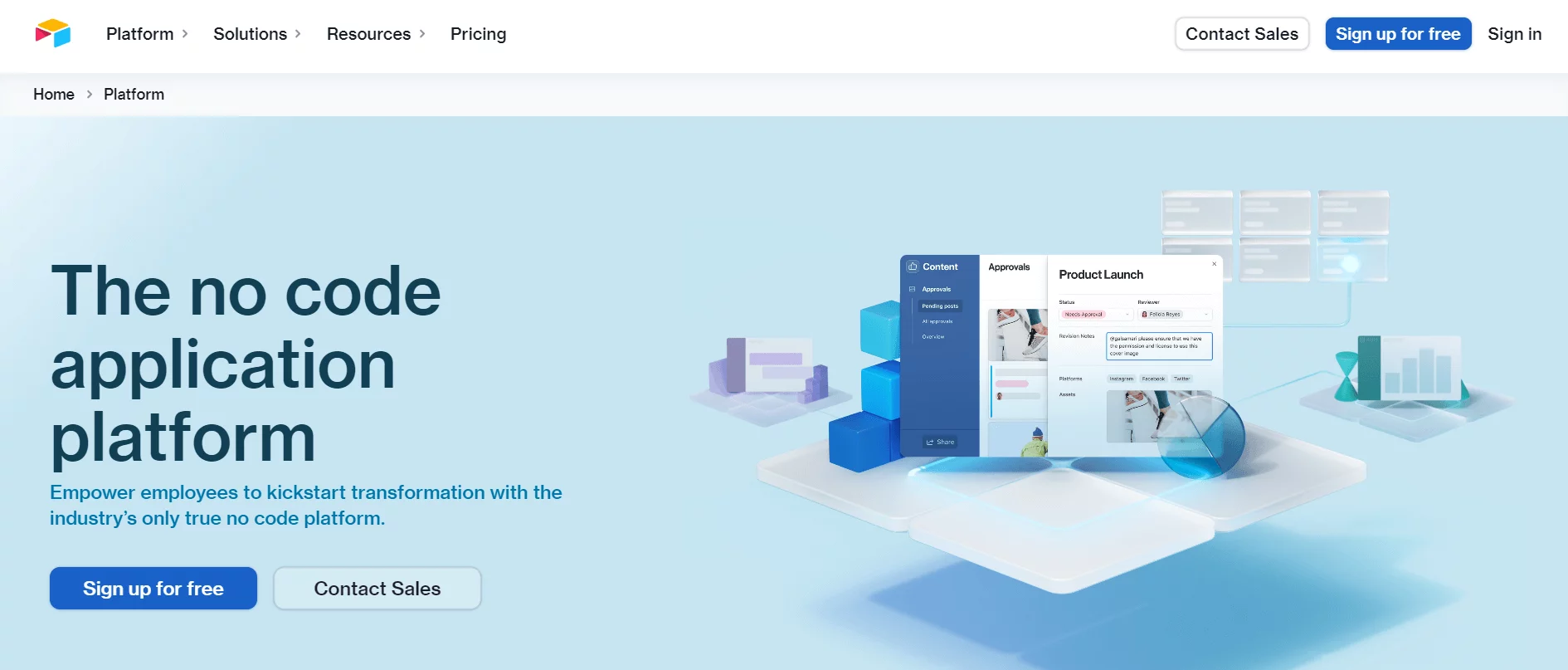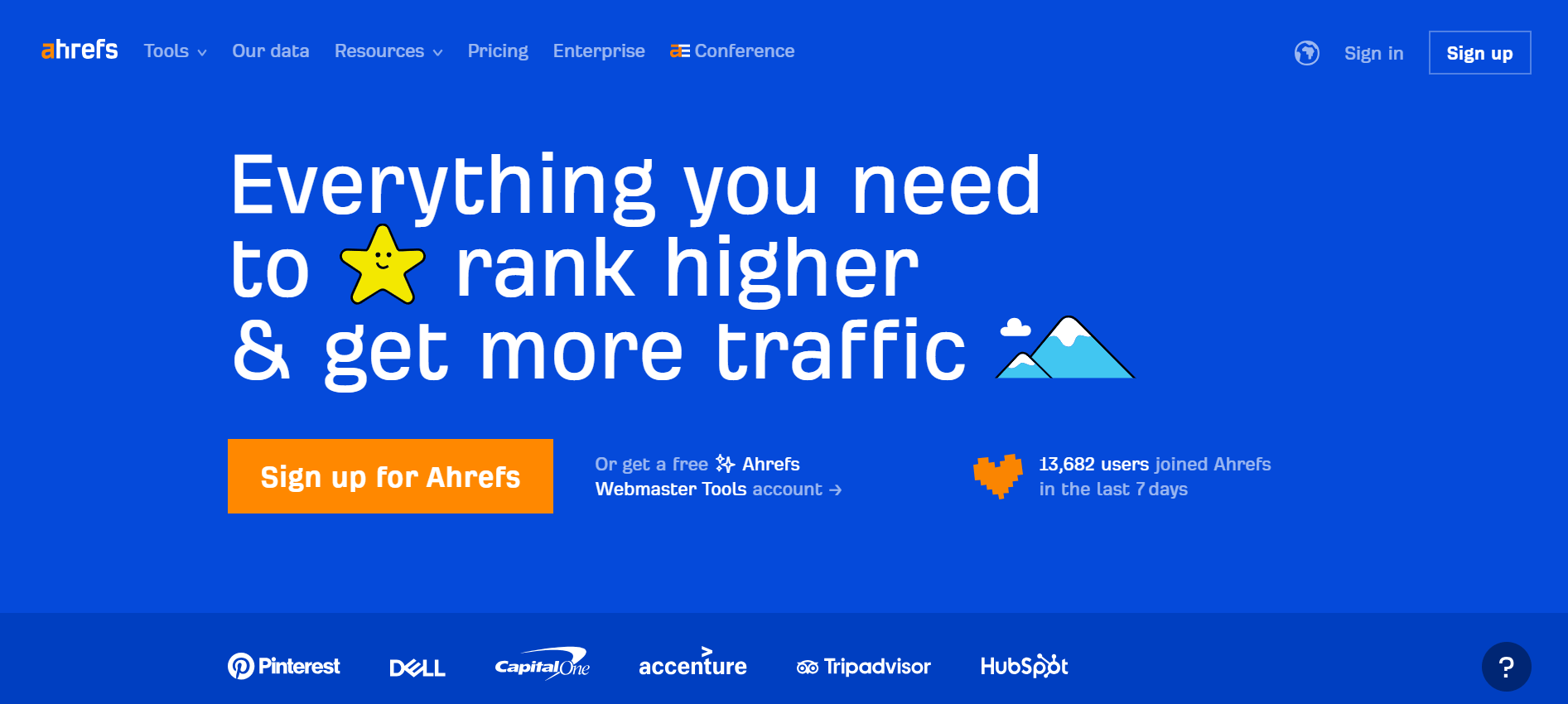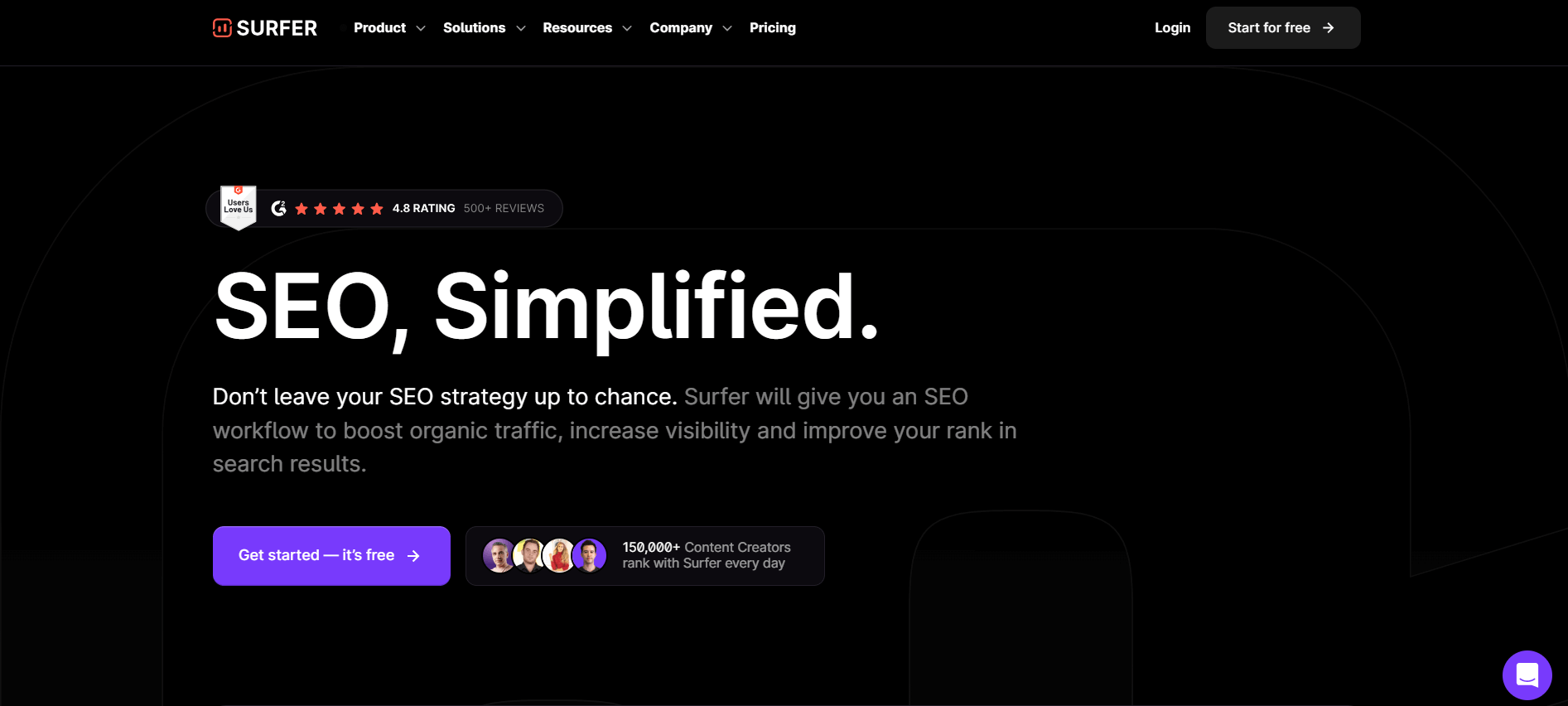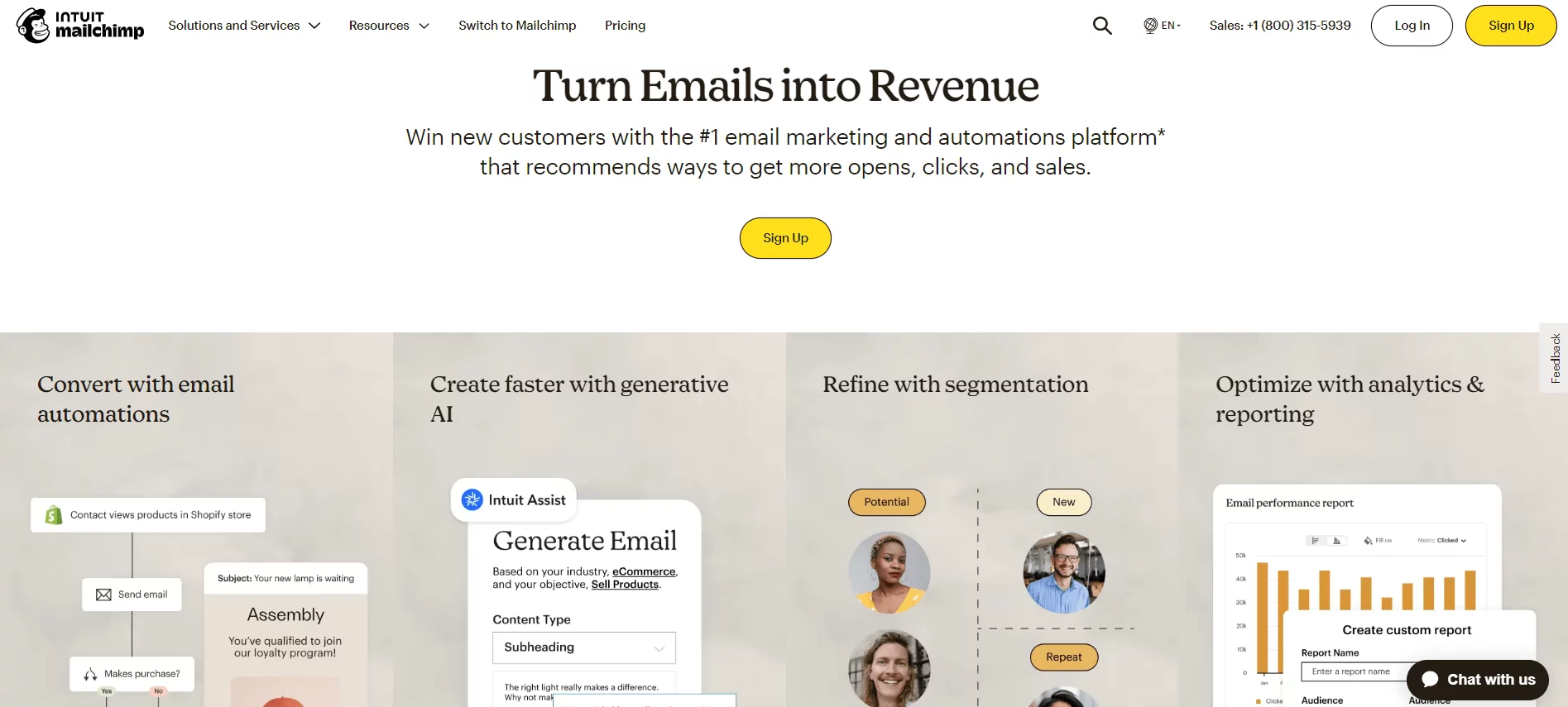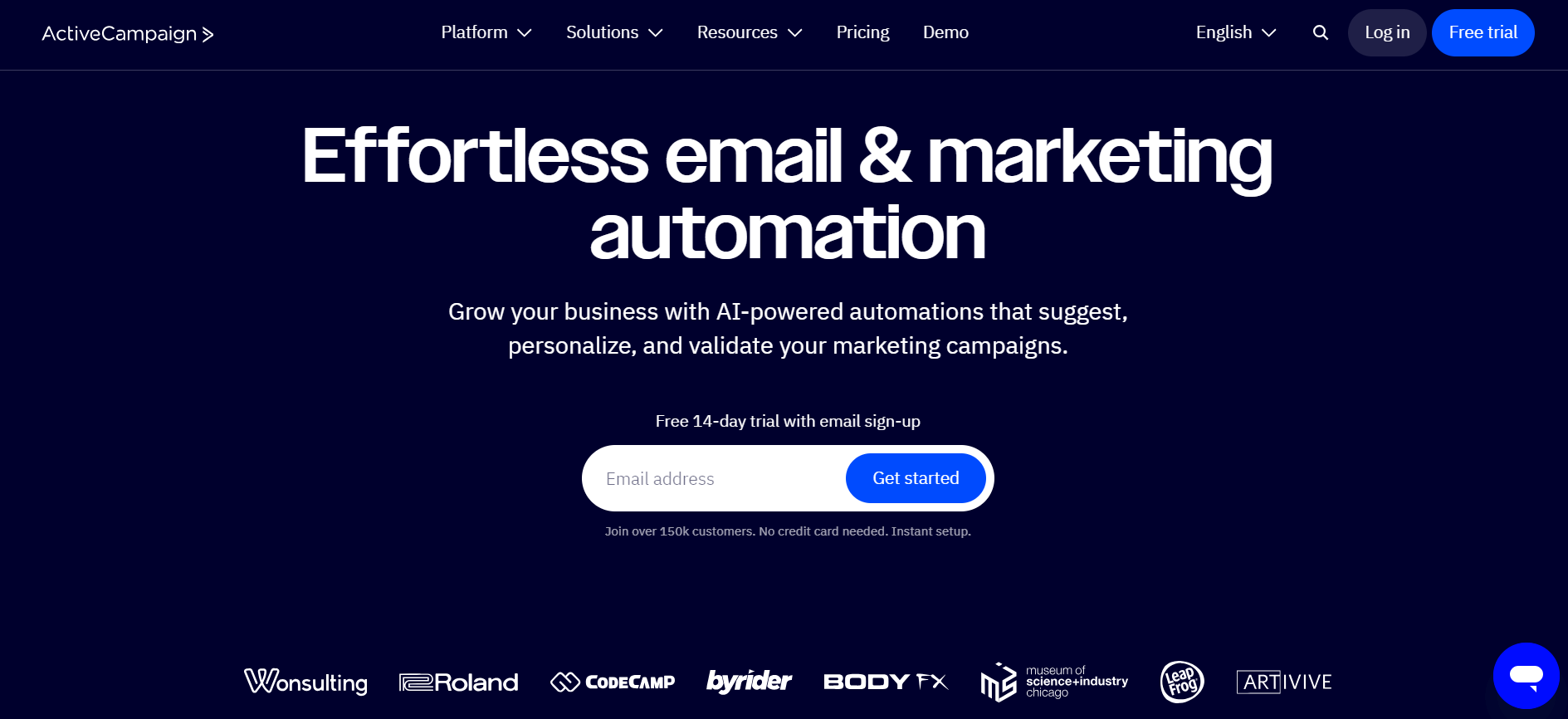Marketing strategies for SaaS companies are more complex than those created for other products or services. They lean heavily into customer retention, not just acquisition — that takes lots of customer data and well-planned, personalized marketing campaign plans. But SaaS marketing software can make your job easier.
The SaaS marketing tools I’ll cover in this post help streamline your efforts across all stages of the customer lifecycle — from acquiring leads through social media and search engine optimization to keeping customers in the loop via personalized email campaigns.
What to look for in a SaaS marketing automation tool
Before we jump into the list, let’s first have a look at a few features a marketing automation tool should cover:
- Campaign planning
The option to set up a marketing calendar — be it for socials, emails, or search engines — directly in your SaaS marketing automation tool helps keep all your team members on the same page and keep track of projects.
- Team collaboration
Speaking of team members, real-time collaboration capabilities help speed up feedback flows for creative projects. The option to set up a customized approval process is also nice to have — it ensures projects roll out in the best possible shape.
- Analytics
Campaign, audience, and competitor analysis capabilities are necessary to refine your strategies. These features give you the insights needed to tweak your campaigns for more personalized experiences and fill in your competitors’ gaps.
Social media content planning and scheduling tools
1. Planable – best SaaS marketing tool for content planning, collaboration, and approval
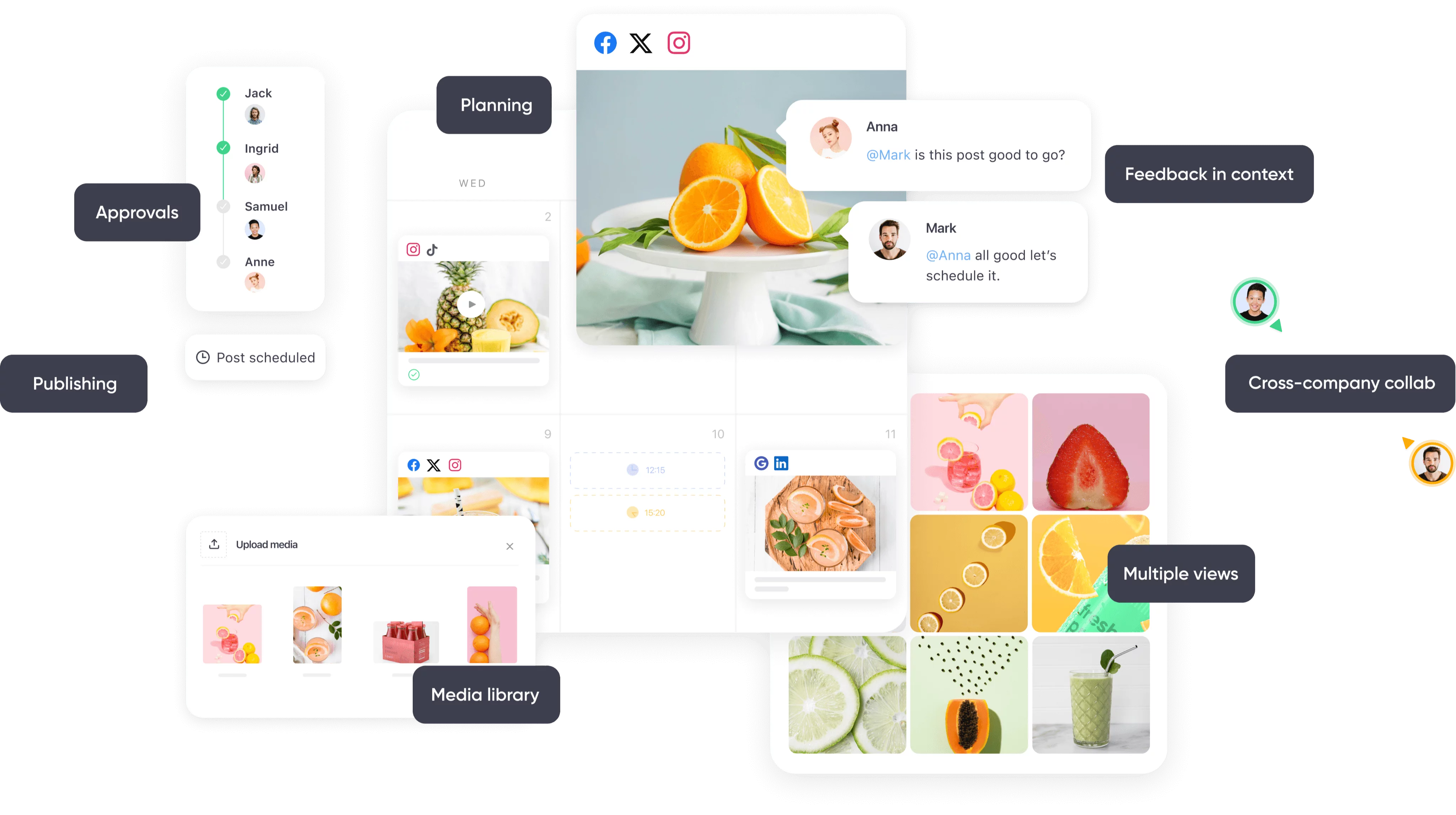
Planable’s features from planning to feedback and approval
Planable is a content planning and collaboration platform with built-in social media scheduling capabilities.
You can schedule social media posts for Instagram, Facebook, TikTok, YouTube, Twitter, Pinterest, LinkedIn, Google Business Profiles, and as of recently Threads, directly from the platform via a straightforward drag-and-drop calendar.
Planable stands out through its content collaboration and approval functionalities. You can collaborate with team members through real-time comments, annotations, and clear text suggestions — features available for any type of written content, besides social media.
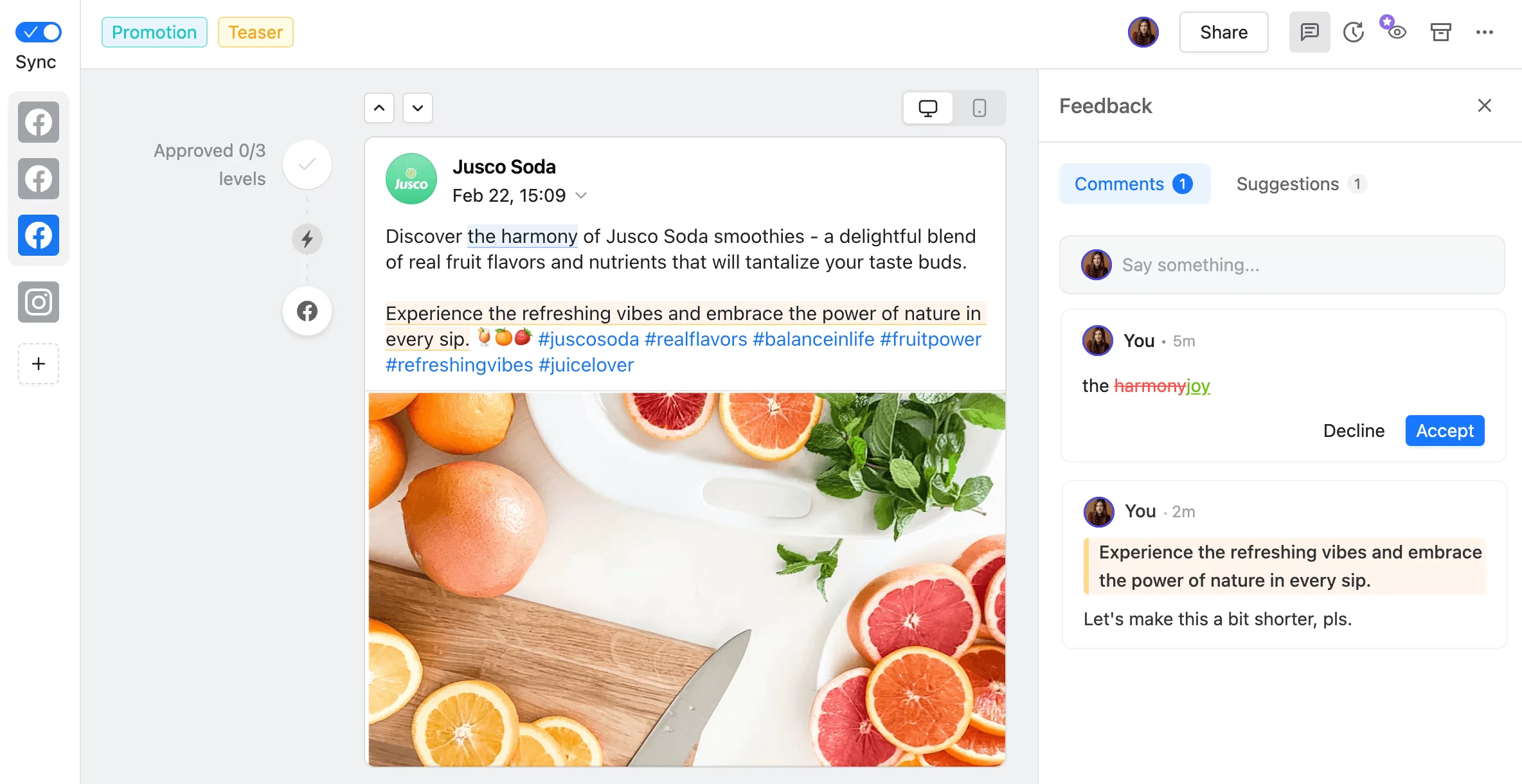
Collaboration on a Facebook post in Planable
This makes Planable an ideal option for a SaaS company looking to manage all parts of its content marketing strategy under the same roof — from email newsletters to long-form thought-leadership-oriented posts, and more.
Another highlight is Planable’s customizable multi-level workflows.
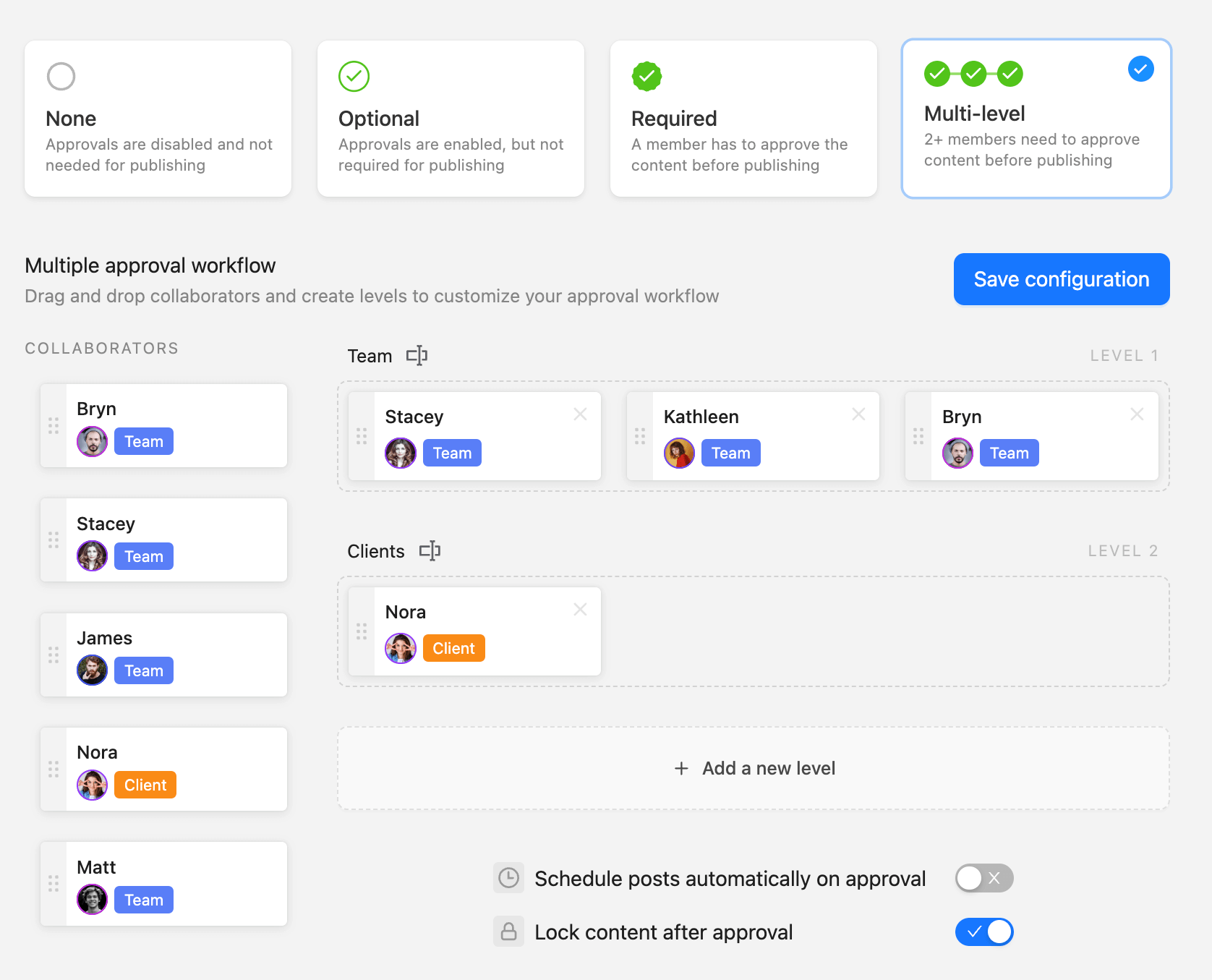
Multi-level approval workflow in Planable
You can set up multiple distinct approval layers to ensure content goes through thorough review processes involving multiple departments before publishing. Approving content is as easy as clicking a button in the calendar view.
Or, if you want to simplify the review process — or maybe skip it entirely — you can pick one of Planable’s other ready-made approval workflows. For example, you can make approvals completely optional.
Key features
- Built-in image and video editing tools
Tweak your visuals through an ample selection of filters and the option to adjust vignetting, exposure, and more. Collaborate with team members on these edits through comments.
- Content calendar
Organize content through a drag-and-drop interface. Add color-coded labels and use the platform’s ample selection of filters to keep an eye on content for each specific marketing campaign and/or social platform.
- Team management
Set up custom user roles and permissions. Create separate workspaces dedicated to each team, brand, or client. Use version history to see whether feedback was implemented properly.
- Automated publishing
Automatically publish content after approval across one or multiple social platforms. Set up recurring posts to publish posts daily, weekly, or monthly.
- Social media analytics (optional add-on)
Track social media performance across one or multiple channels. Quickly generate straightforward interactive reports and uncover valuable insights about your audience — location, age, gender distribution, and more.
Drawbacks: Although Planable offers social media capabilities, the platform currently lacks social listening features.
Pricing: Paid packages start at $33 per month. You can also try Planable for free and schedule up to 50 posts.
2. Hootsuite – best for competitive analytics
Hootsuite is an all-in-one social media management platform with excellent competitive and industry benchmarking tools. You can stack up your social media performance against your competitors or industry averages side-by-side.
You can uncover key insights, like your competitors’ top-performing posts, trending hashtags, or posting frequency — complete with automated suggestions on how to improve your social media marketing campaigns.
Key features
- Cross-channel analytics
Gauge your marketing strategy’s results across all your social media channels through unified reports. Compare metrics side-by-side to see where you excel and where there’s room for improvement.
- Social media customer service
Handle social media customer queries under a unified message inbox — respond to DMs, comments, and mentions across multiple channels. Leverage Hootsuite’s contact management tools to add notes and monitor previous customer conversations.
- Content scheduling
Schedule content across multiple social marketing channels in bulk. Get automated posting time suggestions.
Drawbacks: Hootsuite’s pricing structure may make the platform unattainable for SaaS marketing teams with limited budgets.
Pricing: Hootsuite’s plans start at $99 per month (billed annually), with one user included. There’s also a free trial available for 30 days.
Marketing project management tools
3. Notion – best for internal documentation
Notion is an easy-to-use project management collaboration tool perfect for a SaaS business looking to streamline internal documentation processes. The platform lets you set up entire internal wikis with collapsible menu items, search boxes, and more — all through a drag-and-drop interface.
You can also publish internal documents as web pages or share them directly through Slack, Jira, or GitHub, so team members can get easy access to files like content briefs, product documentation, and brand guidelines, for example — ideal for remote-first companies.
Key features
- Collaboration
Set up internal documents with other team members in real time. Monitor all team comments in the same place through Notion’s message inbox.
- Project management
Plan and manage projects through numerous views, like Kanban boards, product roadmaps, and calendars. Assign deadlines and task priorities and keep work organized with sub-tasks and task dependencies.
- Ample template library
Kickstart your project management and internal documentation processes through Notion’s large selection of community-made templates. Find project management templates for product launches or document templates for user personas, for example.
Drawbacks: Users report a rather steep initial learning curve.
Pricing: Paid plans start at $10 per user per month (billed annually), and there’s also a limited free version available.
4. Airtable – best for campaign planning and management
Airtable is a project management tool perfect for SaaS companies looking to plan and manage marketing campaigns at scale.
The platform’s Calendar, List, Grid, and Gallery views give you a high-level overview of all your campaigns — you can also zoom in and manage a specific project through Kanban boards and Gantt charts, for instance.
Airtable also includes built-in OKR and budget-tracking tools to ensure your marketing efforts are always on course.
Key features
- Interface Designer
Create custom interactive applications for all your marketing-related needs via a drag-and-drop interface — from internal documentation databases to digital asset repositories and feedback flows.
- Templates
Access numerous marketing-specific templates dedicated to campaign tracking, competitive analysis, event planning, and more.
- Automation tools
Automate approval requests and set up task dependencies via a no-code or low-code interface.
Drawbacks: File storage is limited across all pricing packages.
Pricing: You can use Airtable for free. Paid plans start at $20 per user per month (billed yearly).
SEO tools
5. Ahrefs – best for backlink analytics
Ahrefs is an all-in-one SEO tool with particularly useful backlink analytics capabilities. The platform gives you an in-depth overview of your — or any other — website’s backlink profile, complete with domain and URL ratings, broken links, anchor text previews, and page traffic.
These features help identify any link-building opportunities, and see which pages attract the highest and lowest number of backlinks, along with their quality — handy to identify any strengths or weak spots in your or your competitor’s topical authority strategy.
Key features
- SEO site audits
Run website audits through Ahrefs to identify any technical and on-page SEO issues that may affect your rankings — 404 error pages, missing image alt texts, slow loading speeds, and so on.
- Rank Tracker
Use the Rank Tracker to gauge your keyword optimization efforts. See how much traffic your keywords generate over time and their average position in organic search listings. Identify which keywords ranked in Featured Snippets, People Also Ask, Knowledge Panel results, and more.
- Competitive analytics
Compare your keyword optimization strategy against all of your competitors side-by-side. See their top-performing keywords and where they rank (image packs, Featured Snippets, etc.). Identify your competitor’s broken pages so you can fill in the gaps.
Drawbacks: Large pricing differences between plans make scalability a challenge — especially when considering that most of the platform’s subscription tiers only include one user.
Pricing: Ahrefs starts at $29 per month (billed yearly).
6. SurferSEO – best for content optimization
SurferSEO handles anything and everything blog content optimization-related — from topic ideation to keyword research and content creation.
All you need to do is type in your primary keyword, select a series of generated topics and sub-topics, and the platform will then set up a complete content outline with SEO-ready headings and subheadings in the platform’s Content Editor. You can then start writing right away.
The Content Editor also contains a list of all the keywords you should include, so you can optimize your content on the fly. There’s also the SEO Score, which evaluates how well-optimized your content is compared to your main competitors based on relevant search terms and content structure.
Key features
- Keyword research
Get topic and keyword suggestions based on your target search terms. View each keyword’s search volume, ranking difficulty, and long-tail variations. Generate content clusters directly within the platform to ensure topical authority.
- Content audits
Run audits on existing content to identify improvement opportunities. Identify shifts in organic listing positions, traffic, impressions, and organic click-through rates.
- AI writing assistant
Leverage the platform’s AI writing tool to generate fully optimized content outlines — or complete blog posts. Use Surfer’s AI Humanizer to automatically detect and modify AI-generated outputs.
Drawbacks: Surfer SEO strictly focuses on content optimization — unlike Ahrefs, it doesn’t include any off-page or technical SEO-specific features.
Pricing: Surfer starts at $69 per month (billed annually), with a seven-day free trial available.
Email marketing automation tools
7. Mailchimp – best for developing email marketing campaigns at scale
Mailchimp is an all-in-one digital marketing automation platform emphasizing email marketing tools. The platform stands out through how easy it is to roll out email campaigns at scale.
Mailchimp’s Creative Assistant leverages AI to create ready-to-deploy branded assets and ensure your brand identity is consistent across all channels. The platform’s generative AI capabilities can also write personalized email copy and set up automation workflows like sending winning A/B testing variants at the right time for maximum click-throughs.
Key features
- Audience segmentation
Easily segment your contact list based on specific criteria, like conversion likelihood, survey responses, demographics, and previous interactions. Leverage the platform’s AI to automatically send personalized product recommendations to each segment.
- Email analytics
Measure your email marketing campaign through metrics like open, click-through, unsubscribe, and bounce rates, then compare them to industry averages.
- Content Optimizer
Get AI-powered suggestions to ensure your emails are in the best possible shape in terms of skimmability, typography, and visuals.
Drawbacks: Mailchimp’s A/B testing tool only allows you to test up to three email variations at a time.
Pricing: You can use Mailchimp for free. Paid plans start at $13 per month (billed yearly) for 500 contacts.
8. ActiveCampaign – best for email personalization
ActiveCampaign is another all-in-one marketing automation software with integrated email marketing tools. The platform stands out through its personalization capabilities.
You can leverage ActiveCampaign’s built-in CRM to store and segment your contact list, then use its Dynamic Content features to automatically adjust your email’s copy and media assets based on each contact’s name, deal stage, and more.
Key features
- A/B testing
Test up to five email variations at a time. See how tweaks in your subject lines, body copy, imagery, and CTAs affect your emails’ open and click-through rates.
- Email builder
Set up responsive emails via a drag-and-drop interface and access to 250+ templates. Use the platform’s Dynamic Blocks to quickly add custom timers, social icons, menus, and more.
- Drip campaigns
Set up and schedule personalized email nurturing campaigns via a rule-based no-code interface.
Drawbacks: Unlike Mailchimp, ActiveCampaign doesn’t include a free version, while entry-level pricing packages are more expensive.
Pricing: ActiveCampaign starts at $15 per month (billed yearly), with 1,000 contacts included. There’s also a 14-day free trial available.
Boost team productivity with the right SaaS marketing automation tools
In my book, these are the best marketing automation tools currently available. Although most of the tools I covered here focus on specific marketing channels — like emails, search engines, or social media — Planable stands out as an excellent all-around choice.
With Planable, you can work on, collaborate, and approve any type of written content, which is ideal to plan and manage omnichannel marketing strategies from a single place.
Besides, Planable also doubles as a highly capable social media management tool for agencies through its direct publishing and social analytics features. So why not give it a shot and see for yourself? Try it for free here!




